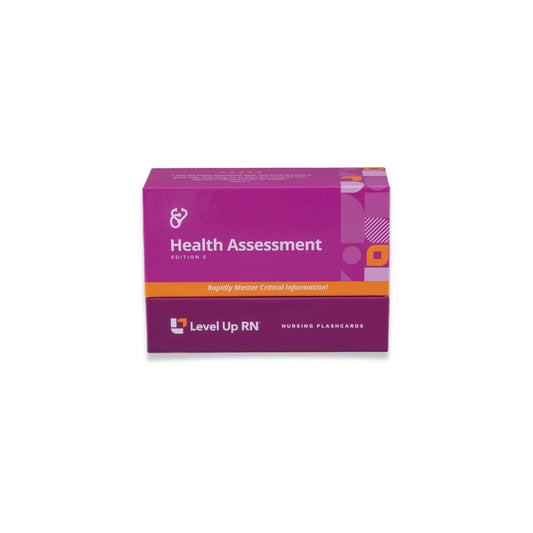Health Assessment, part 11: Skin Assessment
The overall components of a skin assessment and covers information about assessing skin turgor.
Full Transcript: Health Assessment, part 11: Skin Assessment
Full Transcript: Health Assessment, part 11: Skin Assessment
Hi. I'm Meris. And in this video, I'm going to be covering information about how to perform a skin assessment. I'm going to be following along with our health assessment flashcards. These are available on our website, leveuprn.com, if you want to grab a set for yourself. And if you already have your own, I would invite you to pull them out and follow along with me. All right. Let's get started. So in this video, I'm actually only going to be covering information on one card, and you'll see that this is kind of how I'm hoping to do this for the series. We're going to cover information about the assessment components of each system, and then there will be additional videos where we get more in depth. But we're just going to kind of do a brief overview here. So when we're performing a skin assessment, primarily, we are using inspection to assess the skin. So we're going to be looking-- we're going to be observing with our eyes, looking for things like the skin color, and we'll talk about different skin coloration options soon.
We will also be assessing for edema, lesions, incisions, wounds, rashes. Any kind of unique or unusual or abnormal finding of the skin is what we're going to be assessing when we look at the skin. We're also going to look and see, "Does my patient have tattoos or piercings?" This may be more important if you work in different areas of medicine than others. For instance, as an ER nurse, it's almost never applicable for me to document tattoos and piercings. However, that is part of the admission assessment on the floor. Some other things that we will do is we will palpate, and we're going to palpate the skin, typically using the back of the hand to feel for temperature and for moisture. So again, think of that. The parent checking for a fever, they use the back of the hand. So that's how we're going to assess for temperature. And, of course, moisture, we can see sometimes, and then we can also feel to assess.
And then one of the most important things that we will do is we will assess for skin turgor, and turgor has to do with how hydrated a person's skin is. We can see in patients who are dehydrated that they have poor skin turgor. What does turgor mean? Okay. Well, turgor refers to the idea that if I were to pinch up part of your skin and then let it go, typically, we would expect to see that that skin is going to return to baseline. It's going to kind of melt back into the skin. It's going to pop back right away. And that's good skin turgor. So, for instance, if you see how I pull up my skin here and then let go, it immediately pops down. I'm pretty well hydrated. However, a patient who has a dehydration or a fluid volume deficit may have poor skin turgor. And what that means is that it's going to not snap back into place. Their skin is going to sort of slowly melt back into where it goes, and we call that tenting. It's called skin tenting, like a tent that you would sleep in because it holds that little tent shape.
Now, you see me doing this on my hand, specifically just because I think it's easier to demonstrate for visual purposes. However, the most appropriate place to assess for skin turgor is right here. And we're going to say on the sternum. So you can do on the sternum. You can also do right below the collarbone. You can also do the forearm. The forearm is another good place to assess for turgor. Why does this matter? Well, as you age, you start to have thinning of the epidermis. And so, for instance, my mom is in her 70s. Even if she is wildly well hydrated, if I do this on the back of her hand, she's probably going to have some skin tenting. And that's not necessarily an indicator of her hydration status. So we're going to want to use some skin that is thicker and probably has not been exposed to sunlight as much to assess that skin turgor, especially in our patients who are losing the epidermis thickness, because that can contribute to poor turgor. So, again, you can see here that on the card, we say that tenting can indicate dehydration and/or aging. So even if you did pinch the skin on the sternum or on my mom's forearm, you would probably still see some minor tenting. But remember, that's not necessarily an abnormal finding with someone who is an older adult. Okay. So that is it. I'm not going to ask you any questions in this video because we're going to get into the nitty-gritty here coming up in the next videos, and I will see you there. Thanks so much for studying with me. You're doing a great job.


